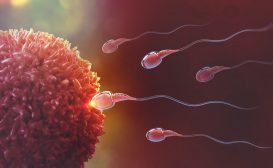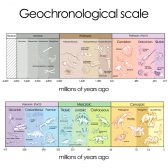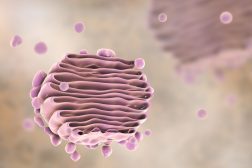Definition
noun, plural: leucoplasts
A plastid lacking photosynthetic pigments and involved in various biosynthetic functions
Supplement
Plastids are organelles involved in the synthesis and storage of food. They are found within the cells of photosynthetic eukaryotes. In plants, plastids may develop into these forms: (1) chloroplasts, (2) chromoplasts, (3) gerontoplasts, and (4) leucoplasts. Certain plastids have the ability to differentiate from one form to another. An example of it is the chloroplasts re-differentiating into chromoplasts during the ripening of a fruit.
Leucoplasts are colourless or non-pigmented plastids. They lack photosynthetic pigments as opposed to chloroplasts containing chlorophyll (green pigment) and to chromoplasts containing other photosynthetic pigments. Leucoplasts are typically found in non-photosynthetic plant tissues, e.g. roots, seeds, etc. They are involved in various biosynthetic functions. One of their primary functions is for storage. And based on what is stored, leucoplasts may be classified as (1) amyloplasts (store starch), (2) elaioplasts (store fat), or (3) proteinoplasts (store proteins). A special type of leucoplast called tannosome, this leucoplast is essential in synthesizing and producing tannins and polyphenols. Apart from storage, certain leucoplasts are involved in the synthesis of fatty acids, some amino acids, and tetrapyrrole compounds (e.g. heme)
Word origin: leukos (white) + plastos (formed, molded)
See also:
Dictionary > Leucoplast
You will also like...

The Origins of Life
This tutorial digs into the past to investigate the origins of life. The section is split into geological periods in the..

Human Reproduction and Fertilization
For human species to obviate extinction, reproductive mature adults should be producing viable offspring in order to con..

Bryophytes
Bryophytes (nonvascular plants) are a plant group characterized by lacking vascular tissues. They include the mosses, th..

Growth and Development of a Human Baby
Upon fertilization, a zygote forms and develops into an embryo. This tutorial elaborates on the growth and development f..

Geological Periods
Geological periods is a study guide that cites the different geological periods on Earth's timeline. Each has a brief ov..

Role of Golgi Apparatus & Endoplasmic Reticulum in Protein Synthesis
The endoplasmic reticulum and Golgi apparatus are the organelles involved in the translation step of protein synthesis a..

